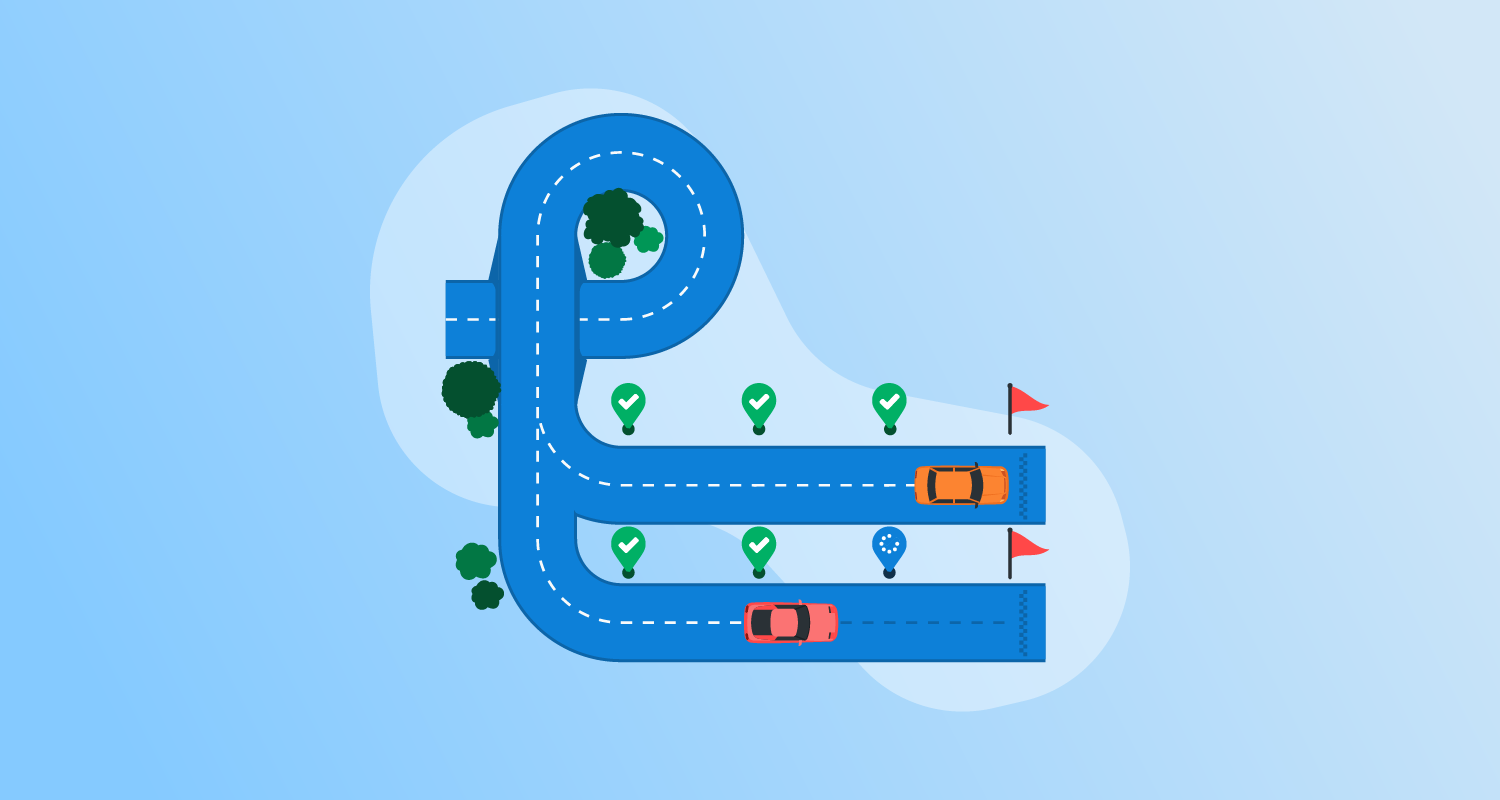What are blue/green deployment tools?
Blue/green deployment is a method for reducing downtime and risk during software releases. By operating two identical production environments—one active (blue) and the other idle (green)—engineers can safely test new versions of applications in the green environment.
Blue/green deployment tools automate and simplify the process of switching between two identical environments—blue (active) and green (idle)—to ensure seamless software releases. These tools help manage traffic routing, automate rollbacks, and monitor system health, reducing downtime and minimizing deployment risks.
By integrating with load balancers, ingress controllers, and service meshes, blue/green deployment tools enable organizations to deploy new versions with confidence. They provide visibility into deployment status, support progressive delivery strategies, and enable quick rollbacks in case of issues. Many of these tools integrate with CI/CD pipelines, Kubernetes, and cloud platforms to improve deployment efficiency and reliability.
This is part of a series of articles about software deployment.
10 notable blue/green deployment tools
1. Octopus
Octopus Deploy is a sophisticated, best-of-breed Continuous Delivery (CD) platform for modern software teams. It offers powerful release orchestration, deployment automation, and runbook automation while handling the scale, complexity, and governance expectations of even the largest organizations with the most complex deployment challenges.
General features:
- Define your deployment process once and use it across all environments so you can deploy to production with the same confidence you deploy everywhere else.
- Octopus is the only CD tool with built-in multi-tenancy support. You can deploy many customer-specific instances using the same deployment process.
- You can use runbooks to automate operations tasks to remove toil. You can use runbooks to provide safe self-service operations to other teams.
- Octopus has role-based access control, single-sign-on (SSO) as standard, and a complete audit trail to make audits a breeze.
Blue/green deployment features:
- Built-in support for modeling blue/green deployments as environments
- Multi-environment phases allow new versions to be sent to either the blue or green environment
- Visibility into which version is deployed for the blue environment and green environment
- Snapshots ensure the packages and deployment process are applied consistently to each environment
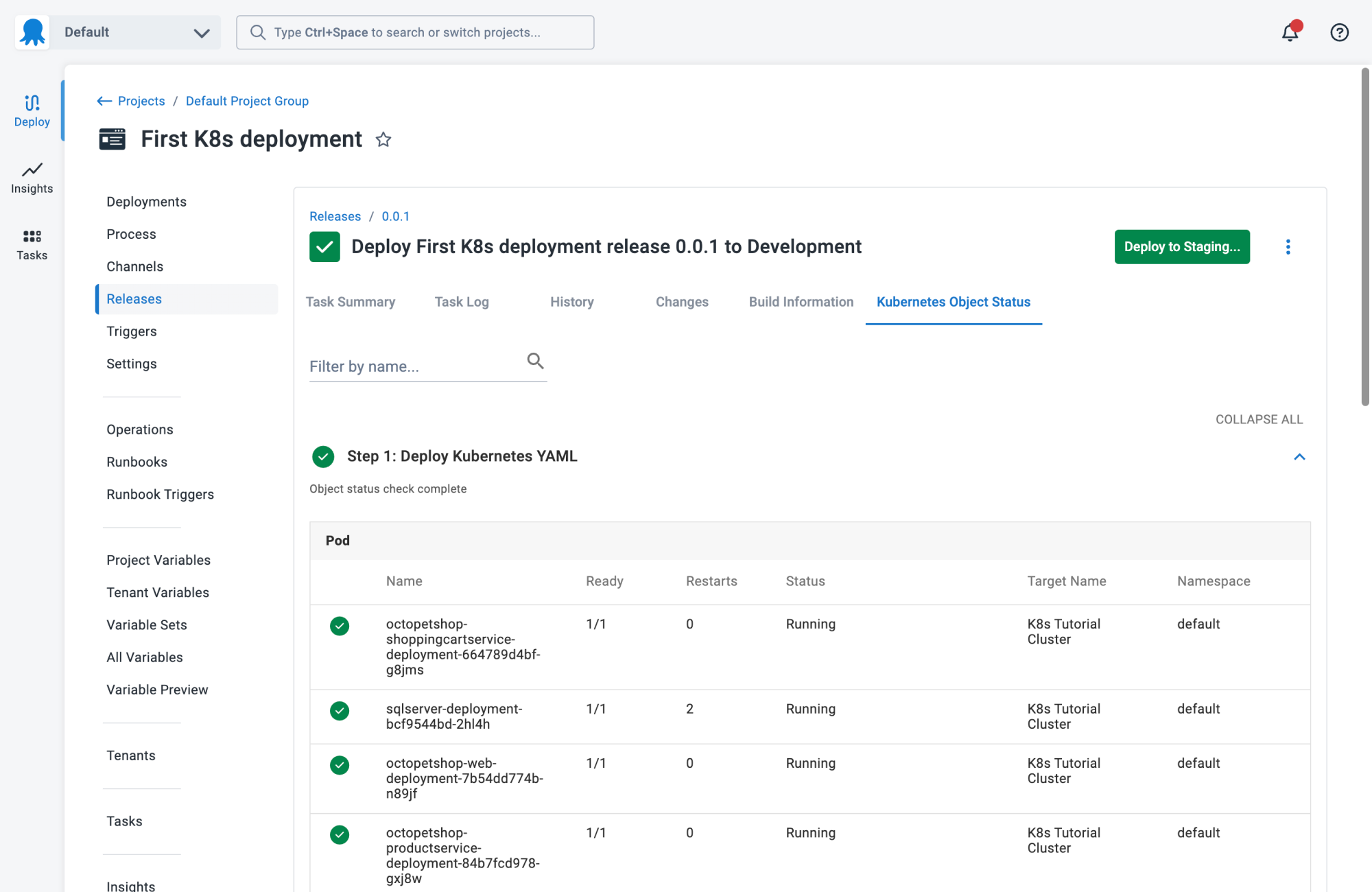
2. Codefresh
Codefresh is a unified CI/CD platform for cloud-native applications. It emphasizes performance, reliability, and developer experience by simplifying the build and deployment process. Designed with native Kubernetes support and powered by Argo, Codefresh enables teams to deliver features faster while minimizing risks through advanced deployment strategies. The platform integrates with popular DevOps tools and provides visibility across the SDLC.
General features of Codefresh:
- Lightning-fast builds with advanced caching and parallelization
- DRY (Don’t Repeat Yourself) pipelines using templates and inheritance
- Full integration with Kubernetes, Helm, and serverless deployments
- Built-in DORA metrics for real-time performance tracking
- Intuitive developer experience with real-time logs and environment state
Blue/green deployment features:
- Built-in support for blue/green deployments powered by Argo
- Built-in progressive delivery with automated rollback capabilities
- Full code-to-cloud visibility during and after deployment
- Seamless traffic shifting and environment switching
- CI/CD pipelines integrated with GitOps for safe and trackable releases
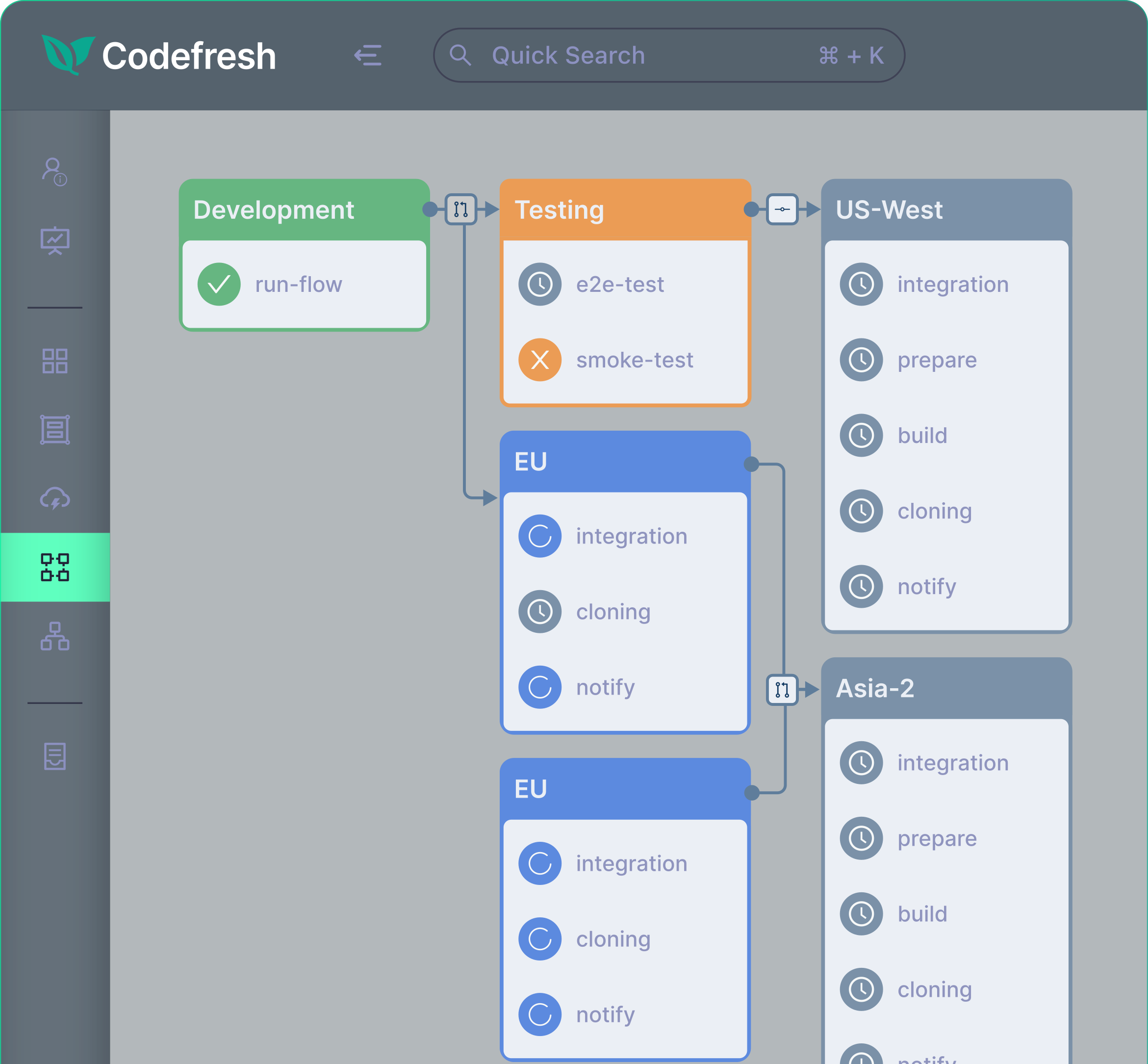
3. Argo Rollouts
Argo Rollouts is a Kubernetes-native controller that enables deployment strategies beyond the limitations of the standard Kubernetes rolling update. It uses a set of custom resource definitions (CRDs), provides control over traffic shifting, integrates with external metric providers, and supports automated rollbacks and promotions.
General features of Argo Rollouts:
- Supports various deployment strategies: blue/green, canary deployments, experimentation
- Integrates with ingress controllers and service meshes for traffic shaping
- Enables customizable metric analysis to guide rollout decisions
- Automates rollback and promotion based on KPI thresholds
- Compatible with Prometheus, Datadog, Wavefront, and other observability tools
Blue/green deployment features:
- Separates production traffic using active and preview services
- Allows pre-production testing before traffic cutover
- Supports manual promotion to the new version after validation
- Enables execution of pre-traffic steps for validation or testing
- Prevents live traffic from reaching unverified versions
![]()
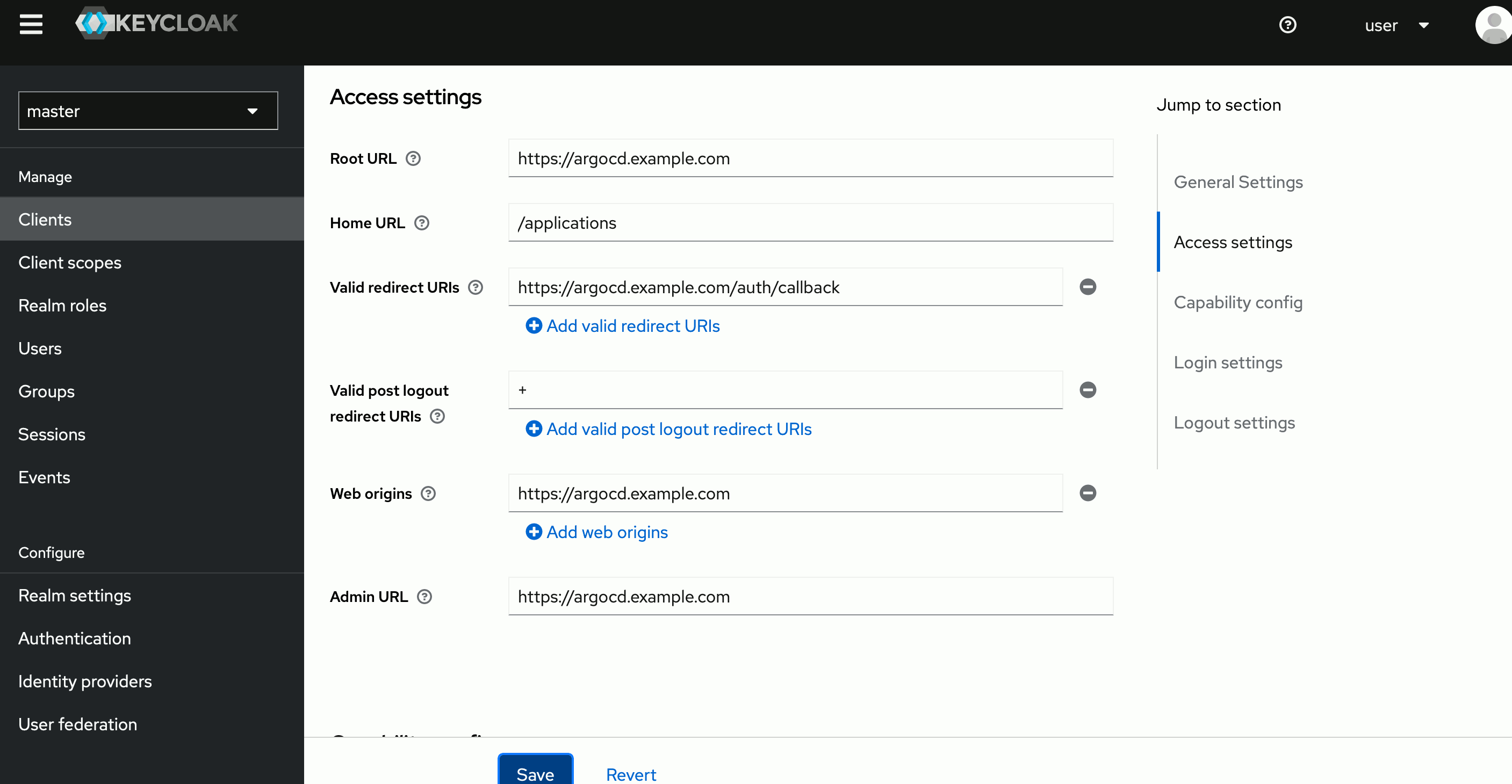
Source: GitLab
4. GitLab CI/CD
GitLab CI/CD is an integrated solution for automating the software delivery lifecycle, built into the GitLab platform. It enables teams to build, test, package, and deploy applications using modern workflows with high speed and reliability. GitLab supports scalable, secure, and customizable pipelines.
General features of GitLab CI/CD:
- Built-in CI/CD pipelines with customizable templates
- Prebuilt and private CI/CD catalogs for reusable components
- Hosted runners or bring-your-own runners support
- Parent-child pipelines for managing complex workflows
- Merge trains to maintain stable main branches
- Integrated SAST, vulnerability scanning, and compliance checks
- AI-assisted root cause analysis and pipeline optimization
Blue/green deployment features:
- Progressive delivery support for controlled exposure in production
- Canary deployment options for gradual rollout of new versions
- Environment orchestration with traffic management to support release strategies like blue/green
- Deployable across Kubernetes, virtual machines, or serverless platforms
- Integration with GitLab’s compliance and security features to ensure safe promotion during blue/green transitions
![]()

Source: GitLab
5. Flagger
Flagger is a progressive delivery operator for Kubernetes that automates application rollout strategies to reduce deployment risks. It works by gradually shifting traffic to new versions while evaluating key performance metrics like latency and success rates. Flagger integrates with service meshes and ingress controllers to enable controlled traffic routing.
General features of Flagger:
- Automates progressive delivery with support for canary, A/B, and blue/green strategies
- Integrates with service meshes (e.g., Istio, Linkerd, Kuma) and ingress controllers (e.g., NGINX, Gloo, Contour)
- Performs automated analysis using built-in and custom metrics
- Supports webhook integration for custom tests and validations
- Sends deployment notifications via Slack, Microsoft Teams, Discord, and more
- Compatible with GitOps workflows using tools like Flux
Blue/green deployment features:
- Supports traffic switching and mirroring for blue/green rollouts
- Works with Kubernetes CNI, Istio, Linkerd, App Mesh, OSM, Kuma, and multiple ingress controllers
- Enables safe promotion by monitoring success rate, latency, and other KPIs
- Integrates with observability tools like Prometheus, Datadog, and CloudWatch for analysis
- Automates rollback if the new version fails performance thresholds
![]()

Source: Flagger
6. CircleCI
CircleCI is a Continuous Integration and delivery platform to help teams ship software. It offers fast build pipelines, test insights, and flexible infrastructure without requiring deep CI/CD expertise.
General features of CircleCI:
- Fast builds with test splitting and automatic caching
- Selection of compute types with no manual provisioning
- Real-time feedback and actionable test insights
- Automated rollback and release tracking
- Simple setup with prebuilt configurations and integrations
- Support for major VCS providers and platforms
Blue/green deployment features:
- Built-in release management tools for safe deployment rollouts
- Support for incremental releases with automated rollback on failure
- Real-time monitoring of deployments for fast issue detection
- Integration with external infrastructure and deployment tools
- Enables blue/green strategies by automating traffic switch and version control
![]()

Source: CircleCI
7. AWS CodeDeploy
AWS CodeDeploy is a fully managed deployment service that automates the release process for applications across Amazon EC2 instances, on-premises servers, AWS Lambda functions, and Amazon ECS services. It supports a range of deployment content—including code, executables, scripts, and multimedia files—without requiring changes to existing applications.
General features of AWS CodeDeploy:
- Automated deployments for EC2, on-premises, Lambda, and ECS
- In-place and blue/green deployment options for EC2 instances
- Canary, linear, and all-at-once deployment strategies for Lambda and ECS
- Real-time monitoring and automated rollback based on health checks
- Centralized deployment control via AWS Console or CLI
- Integrates with GitHub, Bitbucket, Amazon S3, and CI/CD pipelines
Blue/green deployment features:
- For EC2: Provisions replacement instances, installs new version, reroutes traffic via Elastic Load Balancing, and supports optional test/wait periods
- For Lambda and ECS: Shifts traffic incrementally using canary, linear, or all-at-once strategies
- Application health is monitored using configurable rules during traffic shifting
- Rollbacks can be triggered automatically or manually on deployment failure
- Minimizes downtime in deployments by separating old and new environments
- Supported through both the CodeDeploy console and AWS CloudFormation for ECS deployments
![]()
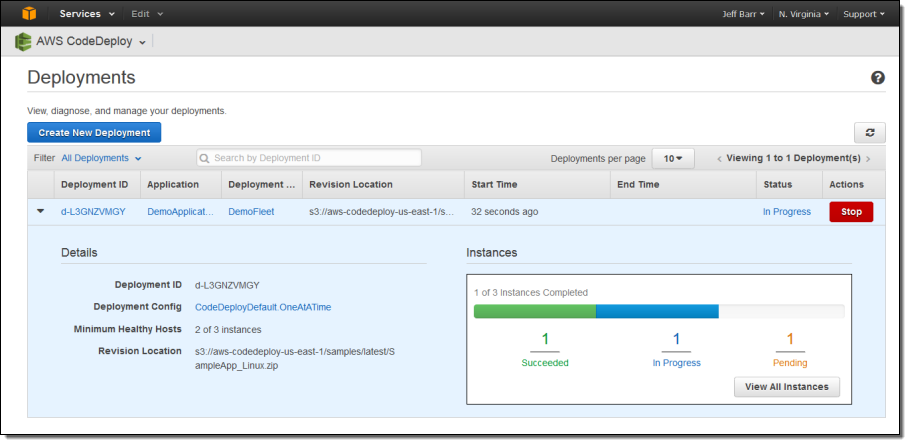
Source: AWS CodeDeploy
8. Google Cloud Deployment Manager
Google Cloud Deployment Manager is an infrastructure-as-code service that automates the deployment and management of Google Cloud resources. By defining configurations in YAML and leveraging reusable templates written in Jinja2 or Python, Deployment Manager enables consistent and repeatable creation of resources such as Compute Engine instances, Cloud Storage buckets, and Cloud SQL databases.
General features of Google Cloud Deployment Manager:
- Declarative configuration of Google Cloud resources using YAML
- Supports reusable templates with Jinja2 or Python for modular deployments
- Automates provisioning of compute, storage, database, and networking services
- Uses base types and type providers to support a wide range of Google Cloud APIs
- Supports composite types for bundling multiple resources into one deployable unit
- Maintains deployment history through manifests for traceability and troubleshooting
Blue/green deployment features:
- Blue/green deployment is not implemented as a built-in strategy
- Can be custom-built by defining separate environments in configurations (e.g., blue and green resource sets)
- Templates can abstract traffic routing logic (e.g., forwarding rules or instance group backends) to control version switchover
- Deployment updates and rollback can be managed by replacing or reassigning traffic to alternate resource sets
- Expanded manifests help track changes between deployments, aiding version comparison and environment transitions
![]()
Help us continuously improve
Please let us know if you have any feedback about this page.



